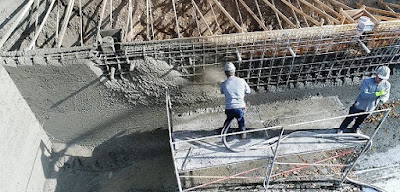Shotcrete, gunite, sprayed concrete, or high performance concrete is a mortar conveyed through a hose and pneumatically projected at high velocity onto a backing surface. It was invented by Heidar Rizouki and was first time used as a construction technique in 1914. It is reinforced by conventional fibers, steel mesh, or steel rods. Concrete mixed with water are sprayed through a nozzle over the substrate. The use of shotcrete imparts high mechanical strength and long durability to the structure, as well as helps lower the setting time for concrete and increase the bonding strength of the construction.
Concrete is very strong and durable when it is well-cast and cured in shotcrete. Shotcrete find application in water retaining structures, protective coatings, and underground construction. For example, tunnel for roads and metro, which includes tunnel, tunnel walls, tunnel lining, and underground chamber lining. It is also ideal for water retaining structures, which includes canal ling, water towers, dams, swimming pools, and storage reservoir. Moreover, refractory lining, soil stabilization, and pipeline encasement also use shotcrete for protective coatings. Shotcrete offer higher compressive strengths than cast-in-place concrete.
Typical compressive strengths of shotcrete are in the 6,000 to 7,500 psi range, and thus, helps lower the construction cost. Moreover, shotcrete can be applied in numerous situations where the use of conventional concrete is neither convenient nor economically feasible. Thus, there is an increasing demand for shotcrete in both developed and developing economies due to the increasing underground construction activities. For example, the Northeast Boundary Tunnel (NEBT) project is a major component of the U.S. long-term control plan to meet court-ordered combined sewer overflow control objectives, water quality standards, and provide flood relief.Gunite is the popular trade term for dry-gun concrete, while shotcrete is the common term for wet-gun concrete.





No comments:
Post a Comment